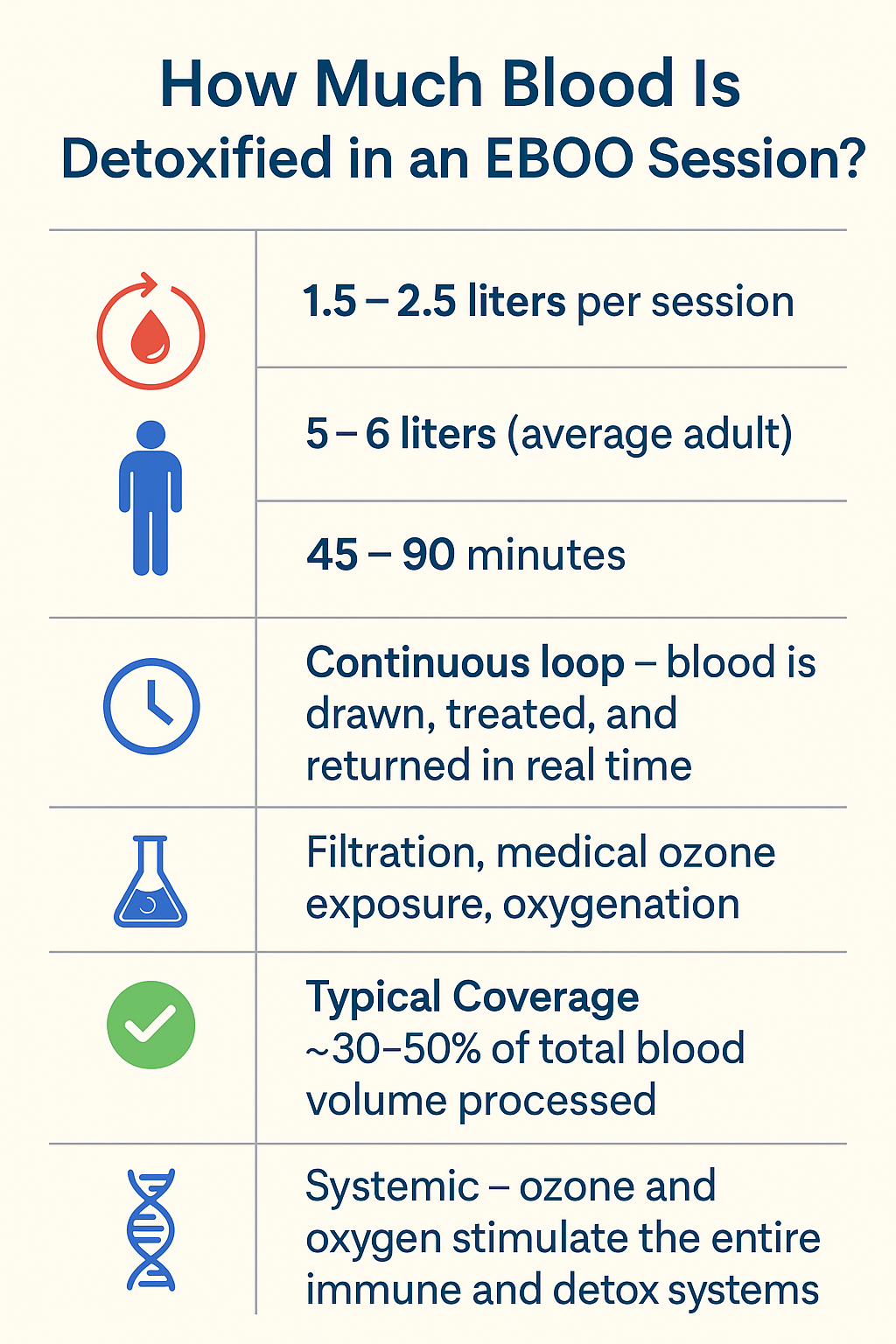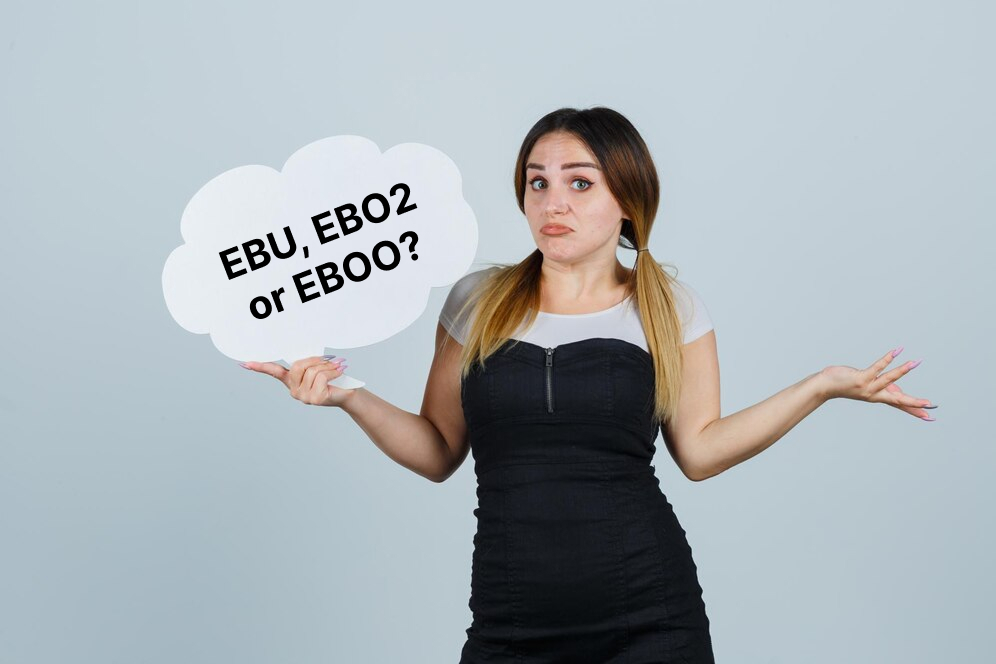During a typical EBOO (Extracorporeal Blood Oxygenation and Ozonation) session, approximately 1.5 to 2.5 liters of blood are processed and treated outside the body. This range can vary slightly depending on:
- The duration of the session (usually 45 to 90 minutes)
- The patient’s circulatory stability and vein access
- The clinic’s protocol and equipment capacity
Understanding Blood Volume and Circulation
An average adult has about 5 to 6 liters of total blood volume. EBOO does not remove all the blood at once—instead, it works in a continuous loop that gradually filters and treats small portions of blood at a time, returning it to the body almost immediately.
By the end of a full session, a significant portion of the body’s blood supply will have passed through the filtration and ozonation process—often close to 50% of the total volume.
Why Not Process All 5–6 Liters?
Processing 100% of the blood isn’t necessary to achieve therapeutic benefits. Ozone has a catalytic effect, meaning it can initiate positive systemic changes with partial exposure. Additionally, excessive processing could increase stress on the cardiovascular system, especially in those with underlying conditions.
Key Takeaway
On average, 1.5 to 2.5 liters of your blood will be detoxified during an EBOO session. This level of processing is generally considered safe, effective, and well-tolerated under professional supervision.
You can take a peek at the entire process through this Infographic:



